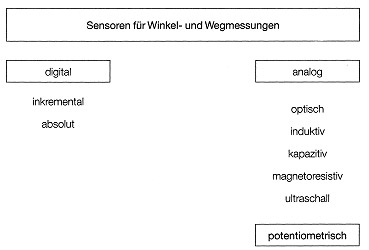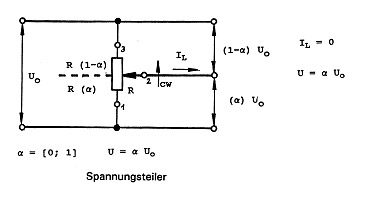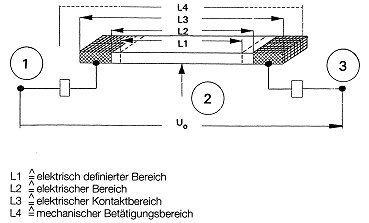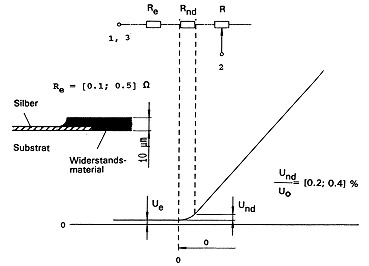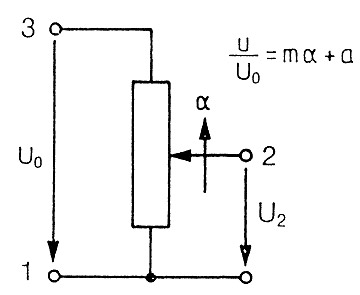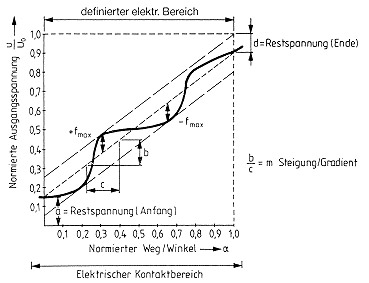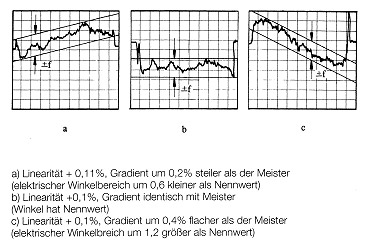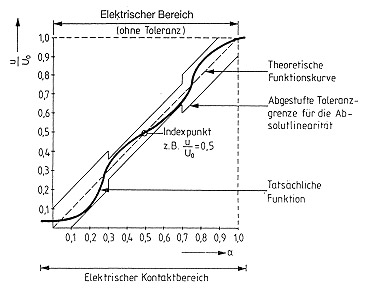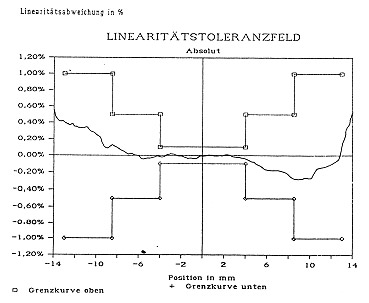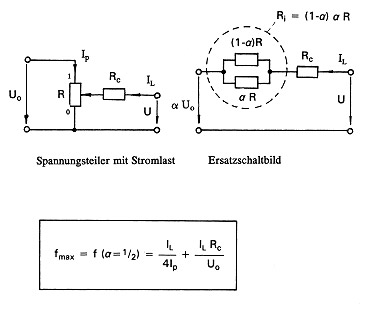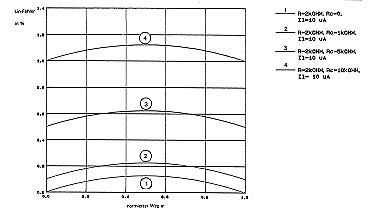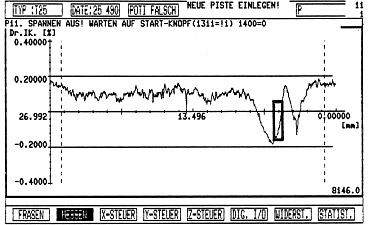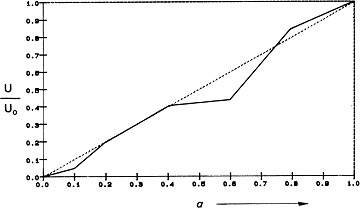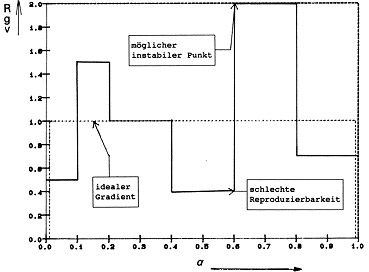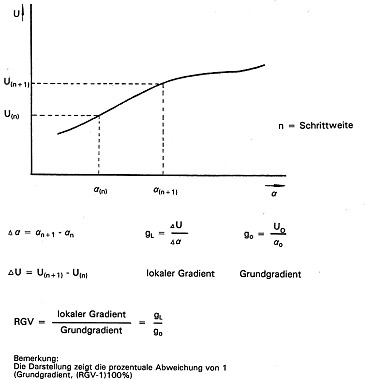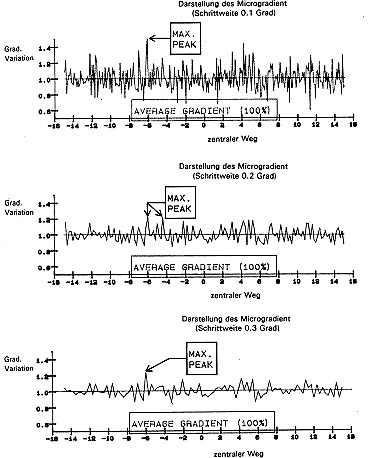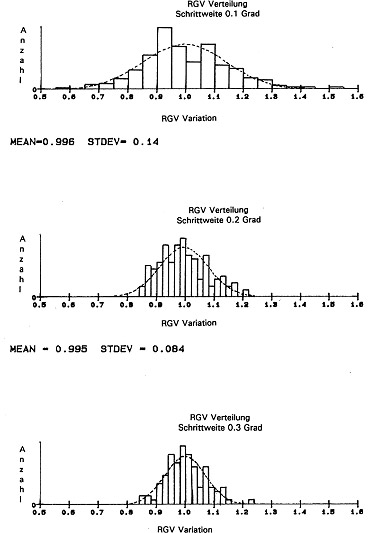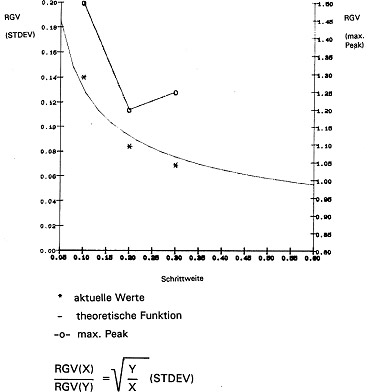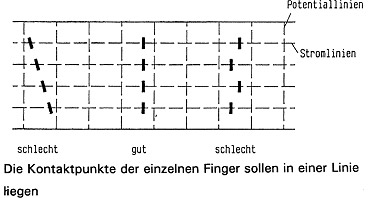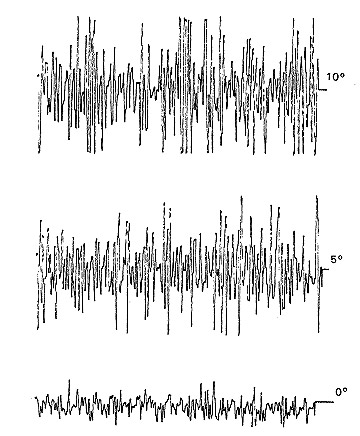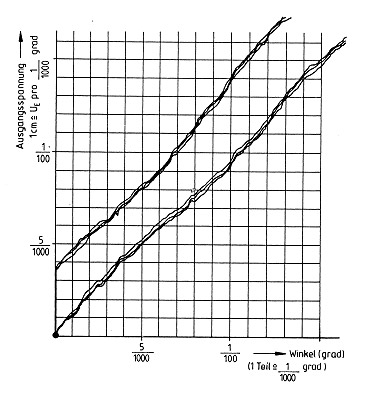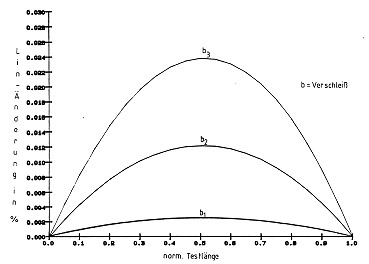1. Introduction
Rapid developments in the fields of control engineering and in microprocessor and semiconductor technology have resulted in the widespread use of electronically controlled systems in every branch of industry today. This has created a need for sensors that are inexpensive but, at the same time, sufficiently robust, both electrically and mechanically, to withstand a wide range of temperatures (e.g. from -40 to +160 degrees centigrade), particularly in applications involving large quantities, such as the automobile industry. Fig. 1 provides a summary of the various types of sensors for angular and linear motion
that are in use today. This paper is concerned with quality criteria (1) and (2) applicable to conductive-plastic potentiometers for use as sensors for angular and linear motion. Such potentiometers essentially comprise the following components:
1. The resistance element (support material + a resistance track of conductive plastic)
2. A wiper (precious metal alloy)
3. A drive shaft or acutating rod
4. Bearings (ball bearing or plain bearing)
5. Housing
2. Terminology / Terms and Definitions
When we refer nowadays to a potentiometer as a sensor, it is important to bear in mind the statements made here only apply if the potentiometer is connected as voltage divider rather than as a variable resistor (rheostat) (Fig. 2). The wiper voltage must be connected, free of load, to an operational amplifier such as a 741, OP 07 or some other component with a high input impedance. Fig. 3 explains the
terms used, such as electrical and mechanical travel. L1 indicates the defined electrical travel. L2 indicates the continuity travel which also includes the non-linear connection fields Fig. 4. L3 indicates the total electrical contact travel of the potentiometer. L4 indicates the mechanical travel. An electrical potential need not be defined for the whole of this travel. In case of nothing otherwise is defined, the fields L1, L2, L3 and L4 are nominally designed symmetrically.
3. Linearity/Conformity
Of all the quality features mentioned, linearity and conformity are the values most often defined in the existing literature (2). These terms express the extent to which the voltage output from a potentionmeter, and also other types of angular of linear movement sensor, differs from a prescribed theoretical function. In by far the majority of cases, the desired output function is directly proportional to the angel or linear movement that is input.
Formula: Fig. 5.
Whereby m characterizes the gradient, the offset voltage of the potentiometer and the linear or angular travel. Where there is a linear relationship, deviation is referred to as linearity. Where the relationship is nonlinear.
U = f (x) + a + b
the deviation is referred to as conformity.
3.1 Independent linearity
If a voltage U0 is applied to a potentiometer with a linear characteristic as in Fig. 5and the wiper is moved in direction Alpha (standardized movement, angle 0;1 ) then the relationship illustrated in Fig. 6 will exist between the output voltage and the mechanically input value. The maximum deviation of the potentiometer curve from an ideal straight line is referred to as the independent linearity error. The slope and axis intercept of this straight line can be so chosen that the error f within the travel L1 is minimized. The error ±f is
indicated as a deviation in percentage terms of the output voltage from the theoretical in relation to the input voltage. Since direct measurement of the potentiometer characteristic does not make it possible to assess the extent of such an error, only the difference between the potentiometer characteristic and that of an essentially perfect master potentiometer is plotted as in the practical example given in Fig. 7. Typical values for independent linearity nowadays lie between 0.2 % and 0.02 %.
3.2 Absolute linearity
With the ever increasing automation of assembly lines, users are finding that values for absolute linearity are steadily gaining importance. Unlike independent linearity, for absolute linearity the reference slope is fully defined (Fig. 8) so that there is no need for subsequent system trimming. The definition of an index point establishes a relationship between the mechanical input value (travel or angle) and the output voltage.
Potentiometers whose linearity is defined by these criteria can be installed without a need for subsequent adjustment. As with independent linearity, it is best to determine the absolute linearity of a potentiometer by comparing its output with that of a master potentiometer. With absolute linearity, it is frequently necessary for the tolerance fields to be stepped. Fig. 9 shows a practical example.
4. Contact resistance
Contact resistance is the resistance between the wiper terminal and the wiper's immediate point of contact on the potentiometer's resistive track. As will be subsequently explained, this contact resistance affects all the important quality features of a potentiometer. Contact or transition resistance can be broken down into three components. The first component, describes the integral voltage drop between the current-carrying track and the contact surface. This component is largely dependent on technology factors and amounts to several hundred Ohm. The second component, the external
component, is far more difficult to master than the first. This external transition resistance has much in common with the contact resistances occurring in switches and plug- and socket-connectors. It is caused by the transition between the wiper and the potentiometer track not being ideal from an electrical viewpoint. Metal oxides, chlorides and sulphides, mixed with various organic substances, can result in the formation of thin nonconductive facings at the interface. If not kept within bounds, this external transition resistance can, under
unfavourable conditions, lead to complete failure to keep within a tolerance range. It is absolutely essential that the materials used in potentiometer manufacutre be subjected to stringent quality control and be matched one with another. The third component, the dynamic component, is related to dynamic drive forces acting on the wiper at high speeds of actuation. With the aid of damped wipers, actuation speeds of up to 10 m/sec can be achieved without any appreciable increase in the dynamic component of contact resistance.
5. Linearity errors due to electrical circuitry
From here onwards, we are only concerned with the linear characteristics (linearity). Relationships must be suitably adapted for applications with non-linear characteristics (conformity) but there are no essential differences. As already mentioned in Section 2, the required linearity values can only be utilized so long as the signal output by the sensor "potentiometer" carries no current. We have now to consider the effect of wiper current on linearity. Fig. 10a illustrates the functional
relationship between wiper current, contact resistance and linearity error. As is shown by the example in Fig. 10b (Characteristic 4), with a wiper current of 10 µA and a contact resistance of 10 kOhm, a potentiometer which has a resistance of 2 kOhm already has linearity error of 1.1 %. A similar situation arises with an ohmic load. This clearly shows how important are the roles played by both wiper current and contact resistance.
6. Linearity errors resulting from mechanical coupling
If there is axial misalignment (eccentricity) between the drive shaft and the shaft of a potentiometer used to sense angular, motion, this will cause a linearity error that increases as the coupling radius decreases in relation to the degree of eccentricity. The following equation determines the maximum relative error
7. Smoothness definitions
When, some 60 years ago conductive plastic potentiometers were first introduced onto the market, it was apparent that although the winding jumps which were a feature of wire-wound potentiometers had been overcome, absolute smoothness of the output voltage could not be achieved. Following some basic reserach by. h.
Wormser 4, 5, 6 , the term "smoothness" was included in the standard issued by the Variable Resistive Compontents Institute (VRCI). Although this definition was adequate at that time it cannot serve as a system definition for many applications. This is because it is now possible to produce potentiometers with
7.1 Smoothness
Smoothness is a measure of the deviations from perfect regularity that appear in the output voltage of a potentiometer. This irregularity is measured over a specified travel increment, for example 1 %, and is expressed as a percentage of the applied voltage. For the measurement of smoothness, the VRCI definition calls for a bandpass filter to be used as a means of suppressing any linearity error and for the potentiometer to be operated
with a load resistance (e.g. 100 . Rp). This method has certain disadvantages:
a) The use of a filter causes both the absolute wiper velocity and any changes in such velocity to affect the smoothness values. Since the filter partly integrates and partly differntiates, the chart-recorded smoothness curve does not accurately indicate the variations in the output signal.
b) The load applied to the potentiometer also contributes to error by causing
variation in the contact resistance which is greatest with the wiper at the voltage application end and lowest at the grounded end of the potentiometer track.
c) The use of a 1 % evaluation window is not accurate enough for many of today's applications.
d) The sometimes arbitrary selection of a filter type, load resistance and travel increment results in-smoothness values not being directly comparable.
7.2 Microlinearity
In 1978, Novotechnik introduced the term Microlinearity, which is defined as the maximum linearity variation within a travel or angular increment that amounts - as with smoothness measurement - to 1 % of the electrical range if nothing to the contrary is defined. Microlinearity is indicated as a percentage of the absolute voltage that is applied. Fig. 11 illustrates the characteristic obtained for a potentiometer with a microlinearity error. This was evaluated by a computer-supported system while making linearity measurements. The travel increments
are super-imposed on the linearity curve and have an overlap of at least 50 %. Contrary to a smoothness measurement, the error here is pureley a linearity error that describes the maximum error within a defined increment. Microlinearity does not, however, make it possible to determine whether a potentiometer will be suitable for a particular applications because any variations in gradient (sensitivity) can only be determined with considerable difficult.
7.3 Relative gradient variation (RGV)
If, in a highly sensitive control system, the amplification should, for example, be so arranged that the control circuit will be stable with the mean slope (gradient) of the sensor, then it is important to be aware of any variations there may be in that slope (Fig. 12a, Fig. 12b). If, at any point, the gradient is appreciably steeper than the mean gradient, then there will be a higher closed-loop gain in this position and this could lead to feedback oscillation. If, on the other hand, the gradient is less steep at some point than the mean gradient, then repeatability would be reduced and there would be less control accuracy. If we relate this type of local gradient
variation gl to the mean gradient go of the potentiometer, then this criterion is independent of the potentiometer length and can be used for the direct comparison of various potentiometers.
RGV | local gradient | gl | ||
= | ————————— | = | — | |
mean gradient | go |
(Fig. 13)
The RGV is indicated as a ± deviation in percentage terms from L (standardized mean gradient).
7.4 Interpretation of RGV
Measurements have shown that with conductive-plastic potentiometers, gradient fluctuations are statistically distributed to travel increments of less than 1 µm, i.e. there is no periodicity or regularity. Fig. 14a shows the RGV curve and Fig. 14b the RGV values with step widths of 0.1, 0.2 and 0.3°. The form of these distributions more or less in conformity with the normal distribution to be expected in view of the central limit value principle. The mean distribution value is around 1 (mean gradient), the variance (STDEV) decreases as the step width increases. Since each individual RGV value represents a mean value, it is to be expected that the variance of such mean values will decrease with a root function in proportion to the increase in step size, since each such increase amounts to an increase in the size of the random sample.
RGV(X) | √ | Y | ||
———— | = | — | applies for STDEV | |
RGV(Y) | X |
In Fig. 15 this variance has been plotted as a function of the step width. RGV variance can thus be considered as a characteristic quality feature of a potentiometer. The functional relationsship also serves to indicate the maximum resolution of a potentiometer which is not infinite, as many potentiometer manufacturers would imply. Maximum RGV values have also been plotted in Fig. 15. This curve, like the mimimum value curve, does not of course, obey statistical laws but arises from the inclusion of defective positions and faults in the system "potentiometer" as a whole. These values are vital criteria for assessing the stability and repeatability to be expected of a control system.
8.2 Hysteresis
The hysteresis value specifies the signal differential resulting if a prescribed position is approached from one side, the point is travelled over and the same position approached from the other side. Hysteresis is mainly affected by mechanical factors such as the bearings, th stiffness of the wiper system and the coefficient of friction between the conductive layer and the wiper. For this reason, attention must be paid to ensure a backlash-free, rigid mechanical coupling. This can be achieved using, for example, a spring-borne concial pin or lever. Fig. 18 shows the recorded hysteresis of a
Novotechnik standard potentiometer. The measuements were taken with clockwise and counterclockwise rotation being repeated three times. While the curves recorded in one direction almost coincide (indicating goog resolution), in the opposite direction they indicate an hysteresis of around four thousands of a degree. The fact that the curves in one direction almost coincide and that there is an constant hystersis in the opposite direction indicates a stable displacement of the wiper contact line which means there is no stick-slip effect.
9. Temperature and humidity coefficients
In many data sheets issued by potentiometer manufacturers, reference is frequently made to the temperature coefficient (Tk) and humidity coefficient (Fk) of the nominal resistance. Where potentiometers are used as voltage dividers (Fig. 2), these values are irrelevant. For this application, it is the Tk and Fk applicable to the voltage divider behaviour which are of significance. It often also happens that the humidity is
not kept constant while making Tk measurements, with a result that a mixture of Tk and Fk is often given as a temperature coefficient. Detailed measurements made by Novotechnik have show that the Tk and Fk of the nominal resistance in conductive-plastic potentiometers (without housing) are of an order of magnitude somewhat less than 200 ppm/°C and 500 ppm/% RH respectively. The Tk and Fk of the
voltage-dividing behaviour are some two orders of magnitdue lower which means that here changes within a range of less than 5 ppm/°C and 5 ppm/% RH can be expected, ensuring constancy over a wide temperature and humidity range. However, this advantage can only be utilized given a suitably designed housing and if, for example, no trimming resistances are used in the potentiometer circuit.
10. Service life
The magnitude of the contact resistance and the wear to which the resistance track is subjected and the resulting change in electrical characteristics dertermine the number of operations to which a potentiometer can be subjected and thus also its service life.
Although of considerable importance for industrial applications, no standard has so far been issued that specifies a service-life definition or a particular method of testing. It is, of course, most difficult to specify a value for wear or for an increase in contact resistance for a given number of actuation cycles since such values are markedly influenced by such external factors as temperature and humidity, and by mechanical and chemical influences.
Such values need to be established for each particular application. This applies to a lesser extent for the method of testing, and here the establishment of standard method would facilitate comparing the service life of various potentiometers. Unless the customer
specifies some different procedure, Novotechnik now uses two methods of testing. The first is a practical test in which extremely small wiper movements are simulated such as frequently occur in feedback control systems. Typical values are: Wiper travel 2° Test frequency 100 Hz.
This dither test permits a relatively rapid result to be obtained concerning contact reliability and any change in gradient within a micro range since, at such a high frequency, some 8.6 million cycles can be effected daily. The second test, the half-stroke test, gives information concerning linearity changes, zero-point shift and wiper wear. This test is performed at a frequency of 10 Hz (0.86 million cycles per day) over 50 % of the track length. As is shown in Fig. 19, this results in a maximum linearity change. A criterion for rejection here might be a doubling of linearity in relation to the state when new and a maximum contact resistance value.



